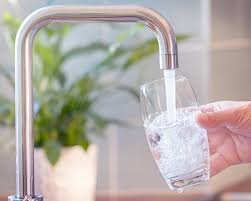Life Style
Understanding PFAS and the Importance of Water Filtration

In recent years, increasing attention has been brought to the group of man-made chemicals known as PFAS (per- and polyfluoroalkyl substances). These substances are used in a broad range of consumer products, but they pose significant environmental and health risks. Fortunately, there are solutions such as the PFAS water filter that can help mitigate these risks.
What are PFAS?
PFAS are a group of more than 4,000 chemicals commonly used in products such as non-stick cookware, water-repellent clothing, and firefighting foams. These chemicals are highly persistent in the environment and the human body, earning them the nickname “forever chemicals.” Their prevalence is concerning due to their potential adverse health effects.
Sources of PFAS Exposure
Humans can be exposed to PFAS through various means, including contaminated water, food, and air. One of the most significant sources of exposure is through drinking water. Many water supplies around the world have been found to contain PFAS due to industrial discharges, firefighting foams used at airports, and wastewater effluents.
Health Risks Associated with PFAS
Numerous studies have suggested that PFAS exposure can lead to various health issues. These include increased cholesterol levels, changes in liver enzymes, weakened immune response, and an increased risk of certain cancers. As such, minimising exposure to these chemicals is crucial for health and well-being.
Importance of Water Filtration
Given the substantial health risks associated with PFAS, employing water filtration systems is essential. Advanced filtration methods can significantly reduce PFAS levels in drinking water. These systems offer an effective means of ensuring safe and clean water supply free from these persistent pollutants.
Types of Water Filters for PFAS Reduction
There are various types of water filters that can be used to reduce PFAS levels in water. Activated carbon filters, reverse osmosis systems, and ion exchange filters have shown effectiveness in removing PFAS compounds. Each type of filter works differently and has its own advantages and disadvantages.
Activated Carbon Filters
Activated carbon filters are commonly used in household water filtration systems. They work by adsorbing contaminants, including PFAS, onto the surface of the activated carbon. These filters are effective but may require frequent replacement to maintain their efficacy.
Reverse Osmosis Systems
Reverse osmosis (RO) systems use a semi-permeable membrane to remove a wide range of contaminants from water, including PFAS. While effective, these systems can be more costly and may result in significant water wastage compared to other filtration methods.
Ion Exchange Filters
Ion exchange filters work by exchanging PFAS ions in water with other ions. These filters can be highly effective in capturing PFAS compounds and are often used in specialised industrial applications as well as home systems for PFAS reduction.
Choosing the Right Filter for Your Needs
When selecting a water filter for PFAS reduction, it is important to consider factors such as the specific PFAS compounds present in the water, the cost and maintenance of the system, and the filtration efficiency. Consulting with water treatment experts can help determine the most appropriate solution for individual needs.
Maintaining Your Water Filtration System
Regular maintenance is essential to ensure the long-term effectiveness of any water filtration system. This includes replacing filters as recommended by the manufacturer and monitoring the system regularly for optimal performance.
The Growing Concern Over PFAS
Public awareness of PFAS contamination has grown significantly in recent years. This has led to increased regulatory scrutiny and efforts to limit PFAS emissions. Understanding the sources and risks of PFAS is crucial to mitigating the impact of these persistent chemicals on health and the environment.
Regulatory Efforts and Future Outlook
Governments and environmental organisations worldwide are working to establish stricter regulations to control PFAS pollution. These measures include setting maximum allowable levels in drinking water and encouraging the development of safer chemical alternatives.
Conclusion
PFAS are a significant environmental and health challenge. However, by understanding the risks and implementing effective water filtration solutions, it is possible to reduce exposure and protect public health. Investing in reliable water filtration systems such as those offered by PFAS water filter technologies is a proactive step towards ensuring cleaner and safer water for all.
-

 Celebrity1 year ago
Celebrity1 year agoWho Is Jennifer Rauchet?: All You Need To Know About Pete Hegseth’s Wife
-

 Celebrity1 year ago
Celebrity1 year agoWho Is Mindy Jennings?: All You Need To Know About Ken Jennings Wife
-

 Celebrity1 year ago
Celebrity1 year agoWho Is Enrica Cenzatti?: The Untold Story of Andrea Bocelli’s Ex-Wife
-

 Celebrity1 year ago
Celebrity1 year agoWho Is Klarissa Munz: The Untold Story of Freddie Highmore’s Wife
















